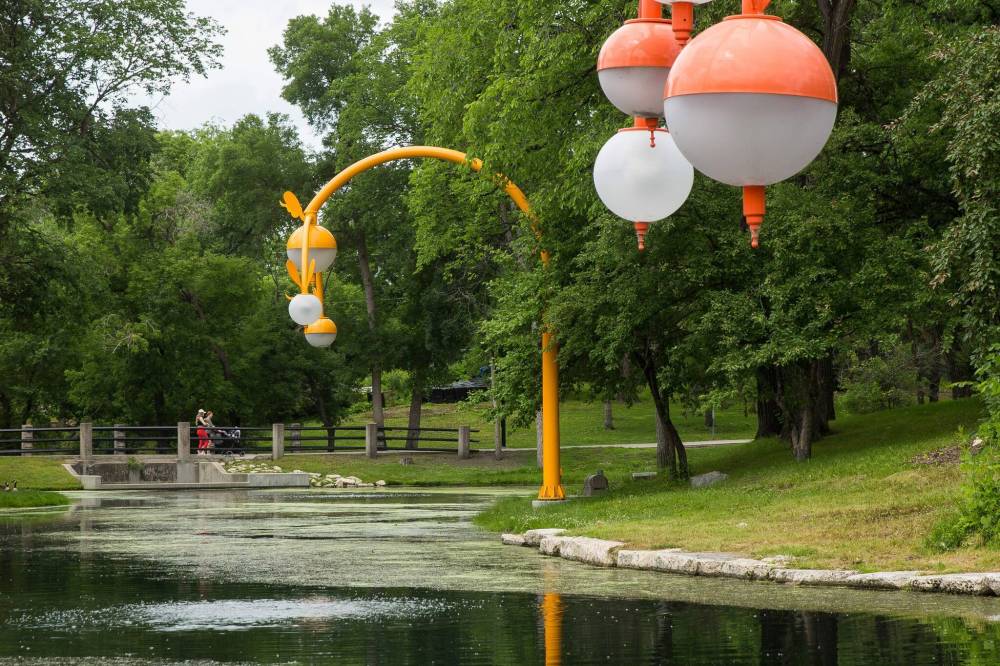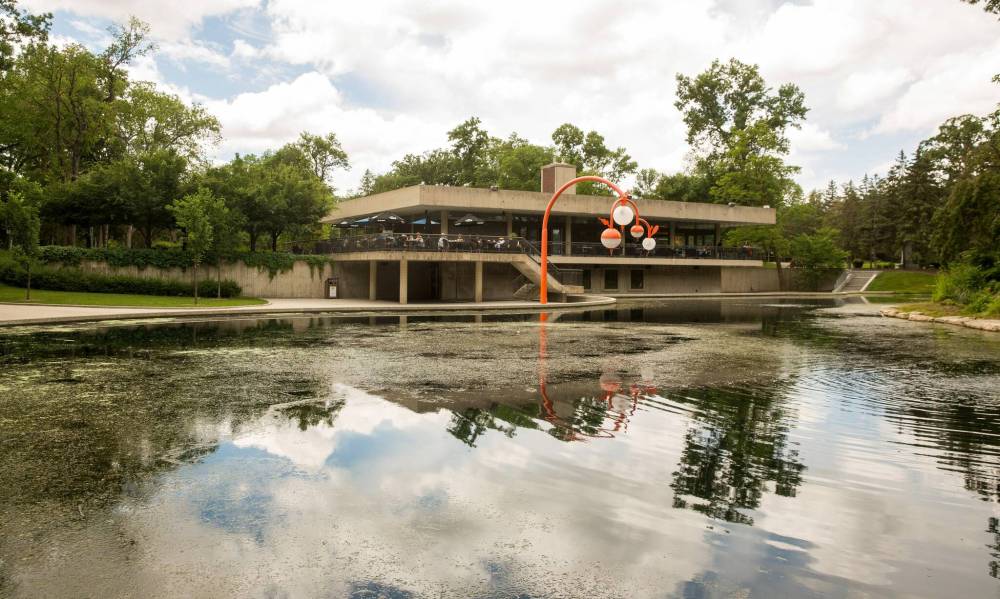Natural beauty Kildonan Park’s lush landscape and ample recreation options provide respite whatever the season
Read this article for free:
or
Already have an account? Log in here »
To continue reading, please subscribe:
Monthly Digital Subscription
$0 for the first 4 weeks*
- Enjoy unlimited reading on winnipegfreepress.com
- Read the E-Edition, our digital replica newspaper
- Access News Break, our award-winning app
- Play interactive puzzles
*No charge for 4 weeks then price increases to the regular rate of $19.00 plus GST every four weeks. Offer available to new and qualified returning subscribers only. Cancel any time.
Monthly Digital Subscription
$4.75/week*
- Enjoy unlimited reading on winnipegfreepress.com
- Read the E-Edition, our digital replica newspaper
- Access News Break, our award-winning app
- Play interactive puzzles
*Billed as $19 plus GST every four weeks. Cancel any time.
To continue reading, please subscribe:
Add Free Press access to your Brandon Sun subscription for only an additional
$1 for the first 4 weeks*
*Your next subscription payment will increase by $1.00 and you will be charged $16.99 plus GST for four weeks. After four weeks, your payment will increase to $23.99 plus GST every four weeks.
Read unlimited articles for free today:
or
Already have an account? Log in here »
Hey there, time traveller!
This article was published 11/07/2022 (1246 days ago), so information in it may no longer be current.
Kildonan Park often gets relegated to second place.
Even a 1972 report by the City of Winnipeg Parks and Recreation Department concedes that “Kildonan Park, Winnipeg’s second suburban park, has remained very much the ‘second-best,’” suggesting the historic venue at 2015 Main St. has “played a subservient role to Assiniboine Park.”
That’s too bad, because Kildonan Park, established in 1909 as a 73-acre park and eventually expanding to 96 acres, is just lovely. Maybe it doesn’t have polar bears, but with its shady lushness, gentle hills and wandering paths, it is in many ways more appealing than its bigger, showier south-end counterpart.

Catherine Macdonald agrees. A retired archivist, freelance historian and mystery writer (So Many Windings is her latest), Macdonald is the author of A City at Leisure: An Illustrated History of Parks and Recreation Services in Winnipeg. “Kildonan Park is a treasure that isn’t given as much credit as it deserves,” she suggests.
According to Macdonald, George Champion, the British-born superintendent of the Winnipeg Parks Board from 1907 to 1935, “envisioned big parks in each corner of the city. His grand vision involved these huge parks connected by parkways and boulevards, by pleasant places to drive. There would be a kind of scenic perimeter drive connecting all the parks, and Kildonan Park was going to be part of that vision.”
Champion, who had worked at London’s Kew Gardens, designed Kildonan Park in the English landscape style. Popularized in the 18th century, this approach to landscape architecture attempted to closely replicate “Lady Nature,” with winding paths, stands of trees, rolling hills, serpentine lakes and native plants.
The organic, curvilinear shapes of the English landscape style were a reaction to the highly formal gardens perfected in France, which were orderly and symmetrical, with long axial views, geometric subdivisions and ruthlessly clipped box hedges.
Of course, the English landscape style still required a lot of hidden work. It’s like nature, but “nature more managed, more curated,” Macdonald suggests. But Kildonan Park varied landscape was suited to this approach (unlike Assiniboine Park, which is fairly flat and wide-open).
“Kildonan Park really had, in natural terms, a nicer kind of space,” Macdonald says. “It’s more treed, there’s a creek running through it, and the land is undulating — or undulating for our city.”
The establishment of Winnipeg’s large city parks came out of a 19th-century zeal for social reform.
“The city fathers established the parks department in the 1890s, responding to changes that were happening all over North America,” Macdonald says. These changes included increasing urbanization and industrialization, and “the things that went along with that, like the perception of crime and shifts in demographics,” she says.

“There was a sense of loss of contact to nature, a sense of needing to reconnect people with nature and expose them to the healthful influences of nature rather than what were seen as the unhealthful influences of the city,” Macdonald explains.
The public park movement, across North America and here in Winnipeg, was partly rooted in a paternalistic approach to the working classes and the notion that they required the elevating moral lessons provided by nature. But there was also genuine concern for the mental and physical health of urban dwellers in a rapidly changing new world.
Public parks were seen as a refuge from the dense, often dirty conditions of the city.
“People would go there and be exposed to beautiful vistas and sequestered spots, and there would be no commercial activity, no circus-type amusements — that’s what they were trying to get away from,” Macdonald says. “The big parks, Assiniboine and Kildonan, were for quiet contemplation and restful recreation. You wouldn’t have loud, raucous rides that were available in other spaces, in commercial parks like Elm Park and River Park.”
As Macdonald explains further in her book, “the civic reform movements of the time were disturbed by the kinds of entertainment offered in amusement parks. In their view, games of chance, unsupervised dances and giddy rides exposed young people to dangerous temptations.”
Champion thought even merry-go-rounds “lowered the tone.”
Public venues such as Kildonan Park instead promoted amateur athletics, especially team sports, which were considered wholesome and character-building.

Also, children’s play, which had been previously viewed as frivolous or even suspect, was now seen as instructive and purposeful activity, thanks to the advocacy of the playground movement, another one of those keen reforming groups.
Many of Kildonan Park’s favourite features reflect its turn-of-the-20th-century origins and the philosophy of the public park movement. Along with the walking trails and flower gardens and picturesque views, there are flat, open playing fields, with picnic shelters and a nearby play structure.
In summer, there’s a water park and swimming pool, and in winter, a skating area and toboggan slides.
There have been lulls and setbacks. The period from 1915 to 1950 is tactfully labelled “The Years of Repose” by the 1972 Parks and Recreation report. But after the 1950 flood and a violent, destructive windstorm in that same year, Kildonan Park bounced back with the addition of Rainbow Stage, which replaced the ruined bandstand.
Designed by the Smith, Carter, Katelnikoff firm and opening in 1953, it is now the largest and longest-running outdoor theatre in Canada. Macdonald has happy memories of going to Rainbow Stage when it was still uncovered. (“We got rained on,” she admits.)
And then there’s the wonderfully weird Witch’s Hut. Designed by Hans Peter Langes, a German-born Winnipeg architect, and donated by Manitoba’s German community in 1970, its proper title is the Fairy Tale Cottage, but everyone knows it by its affectionate nickname.
In a way, the Witch’s Hut suggests a whimsical aspect of the English landscape style — the so-called “folly,” an eccentric garden structure meant to provoke curiosity, surprise and delight, or as Macdonald puts it, a “What the heck is this?” response.
Other additions have contributed to the park’s layered history. The Park Pavilion, now known as the Peguis Pavilion, is a beautifully austere and simple piece of modernist architecture designed by Morley Blankstein and constructed in 1964-65. On the nearby duck pond, artist Takashi Iwasaki and Nadi Design created Bokeh, a bright, playful, Pop-inflected 2019 installation that lights the skating area in winter.

And now, in 2022, how are people using the park, compared with their predecessors from 1909?
Spotted on a recent visit on a perfect summer day: High school grads, some in caps and gowns, some looking a bit shy in their formalwear, taking photos. School kids on end-of-the-year science field trips, searching for plant and animal life. Happy dogs, playing children, couples on first dates. Cyclists, inline skaters and parents pushing strollers. Extended families gathering at the picnic shelters. Teenagers kicking a ball around.
Some things have changed, but Kildonan Park still offers Winnipeggers relaxation, recreation and a space apart from everyday city life.
alison.gillmor@winnipegfreepress.com

Studying at the University of Winnipeg and later Toronto’s York University, Alison Gillmor planned to become an art historian. She ended up catching the journalism bug when she started as visual arts reviewer at the Winnipeg Free Press in 1992.
Our newsroom depends on a growing audience of readers to power our journalism. If you are not a paid reader, please consider becoming a subscriber.
Our newsroom depends on its audience of readers to power our journalism. Thank you for your support.






